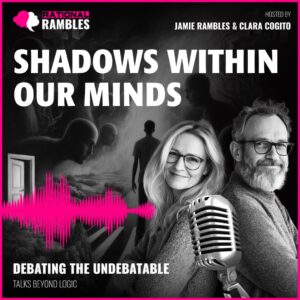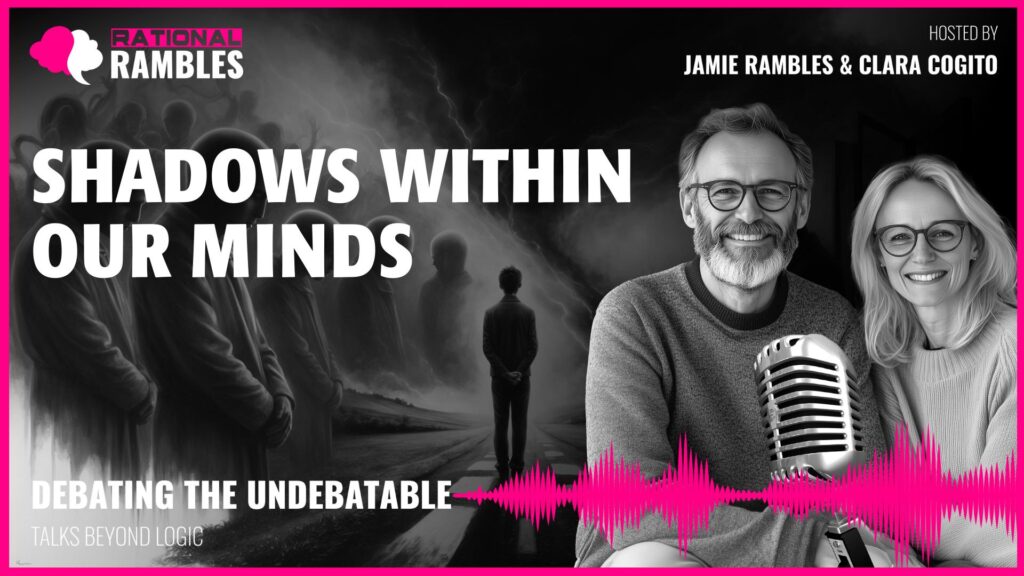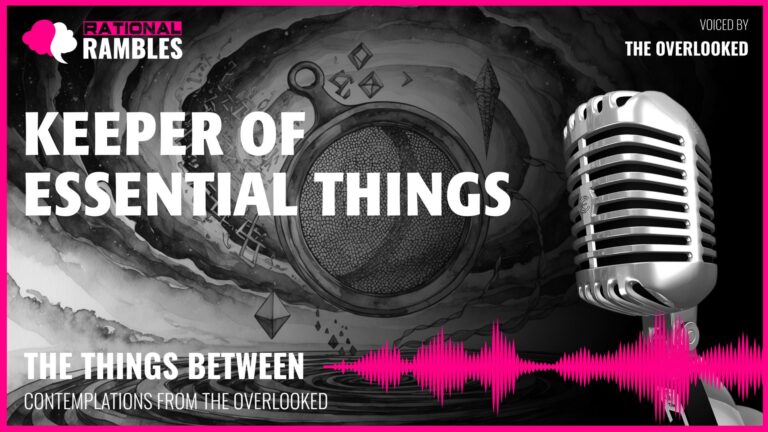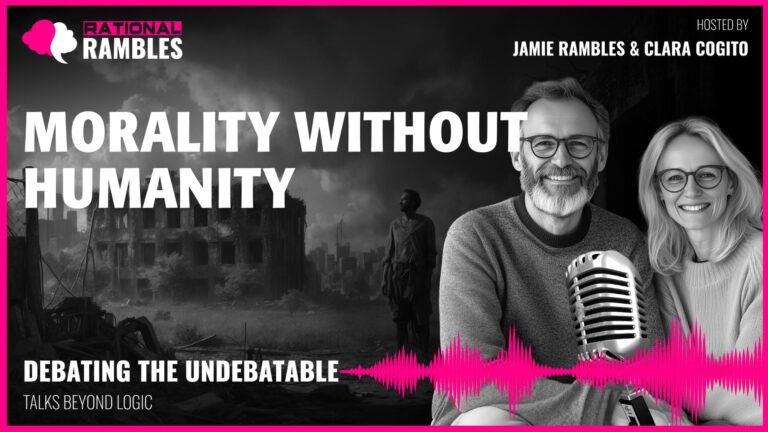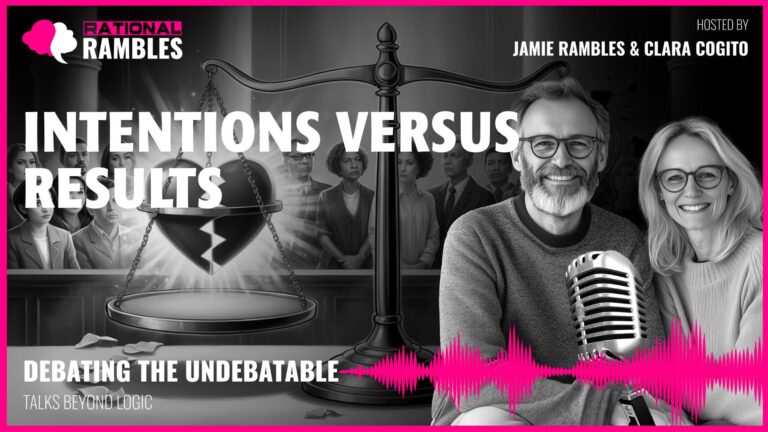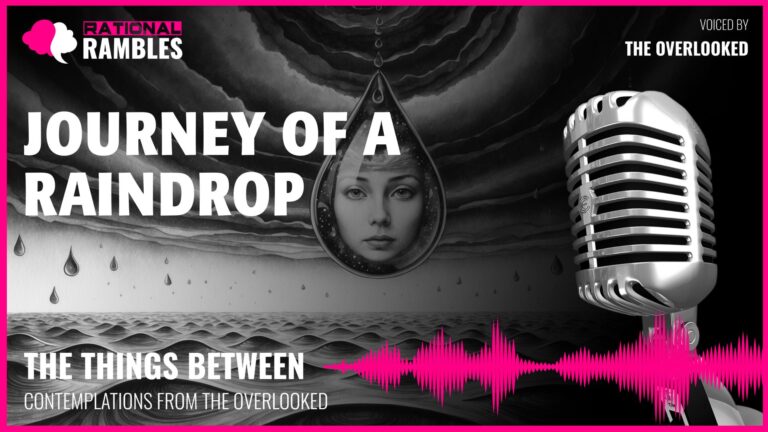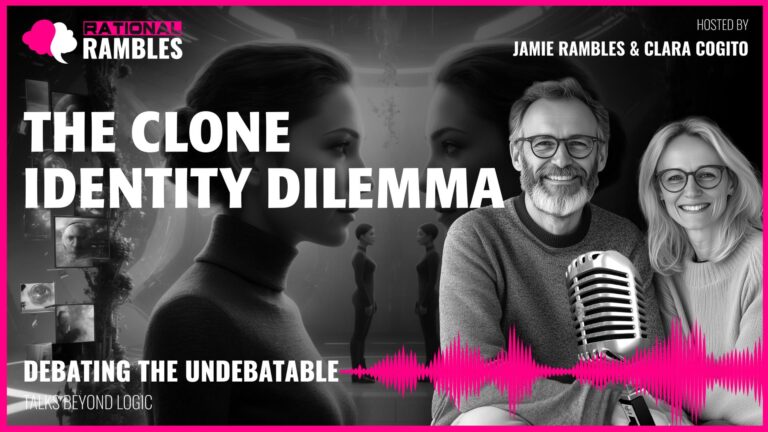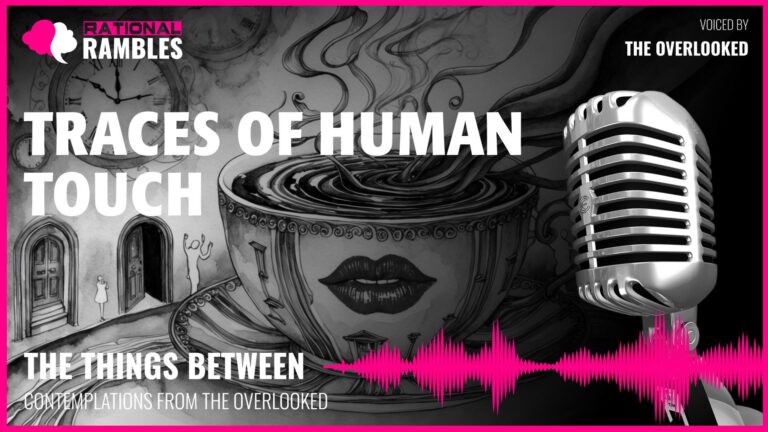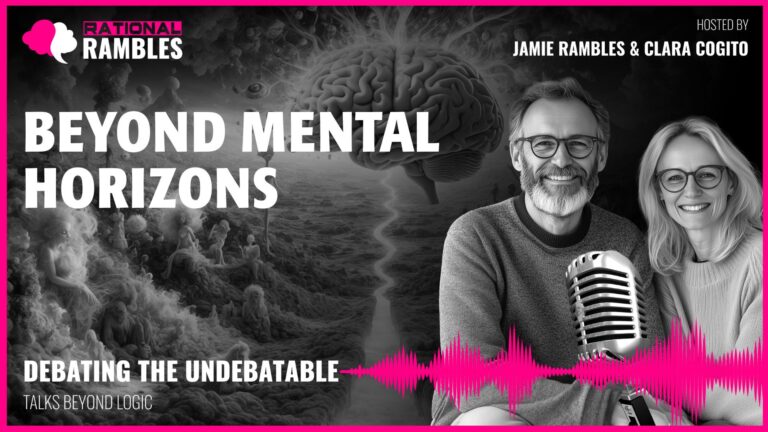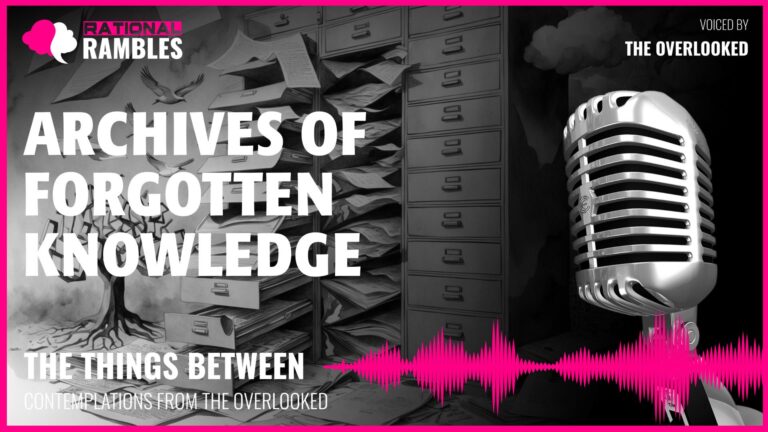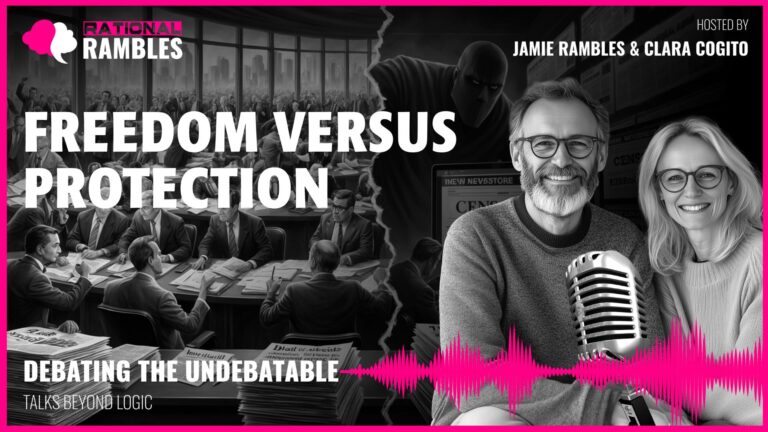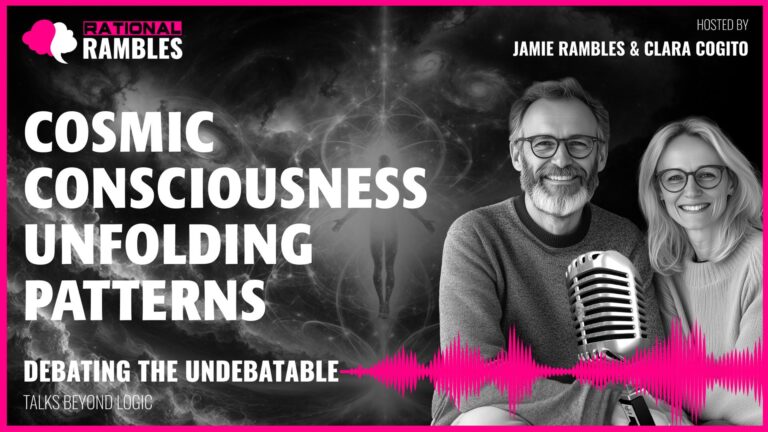Shadows Within Our Minds: Exploring the Invisible Conflicts That Drive Human Behavior
Introduction: The Hidden Architecture of Our Psyche
Within the depths of the human mind exists a complex architecture of contradictions and tensions that profoundly shape our lives, yet remain largely invisible to our conscious awareness. These internal conflicts operate silently in the background of our experience, influencing our decisions, relationships, and emotional responses without announcing their presence. Like shadows cast by structures we cannot directly observe, these conflicts create patterns in our lives that are both persistent and mysterious.
This exploration delves into the nature of these invisible conflicts—the fundamental tensions that exist within each of us as we navigate a world that is itself filled with contradictions. From the neurological foundations that predispose us toward certain tensions to the philosophical implications of living with irreconcilable aspects of human existence, we will illuminate these hidden dynamics not to eliminate them but to engage with them more consciously and meaningfully.
Understanding these invisible conflicts offers us more than mere psychological insight; it provides a framework for approaching the fundamental paradoxes of human experience with greater wisdom and compassion. For it is often in our relationship to these tensions—rather than in their resolution—that we find the most profound possibilities for growth, creativity, and authentic living.
The Nature of Invisible Conflicts
Invisible conflicts represent contradictory forces within our psychological makeup that operate simultaneously, creating tension that shapes our behavior while remaining outside our conscious awareness. Unlike the conflicts we explicitly recognize—such as deciding between two job offers or resolving a disagreement with a friend—these invisible tensions operate at a deeper level, often manifesting in patterns we don’t fully understand or acknowledge.
The Unconscious Dimension
Sigmund Freud’s concept of the unconscious provides one framework for understanding these hidden conflicts. He proposed that a vast reservoir of thoughts, impulses, and desires exists beneath the surface of conscious awareness, influencing our behavior in ways we don’t recognize. While contemporary psychology has moved beyond many aspects of Freudian theory, the fundamental insight remains valid: much of what drives us operates outside the spotlight of consciousness.
Modern neuroscience has validated this insight, revealing that an estimated 95% of cognitive processing occurs unconsciously. Our conscious mind, rather than being the primary driver of our actions, often functions more as a narrator, creating coherent stories about behaviors whose true origins remain hidden from us. This creates a fundamental disconnect between our experience of ourselves as rational agents and the reality of our largely unconscious motivations.
Contradictory Human Needs
At the heart of many invisible conflicts lie contradictory human needs and desires that pull us in opposing directions. We simultaneously crave security and adventure, independence and connection, certainty and growth. These are not flaws in our psychological design but rather reflections of the complex requirements of human existence. We need stability to function but change to evolve; we need autonomy to develop but connection to thrive.
Unlike external conflicts that can often be resolved through compromise or choice, these internal tensions resist final resolution because both poles represent essential aspects of human experience. They are not problems to be solved but paradoxes to be navigated throughout our lives, with different circumstances calling for different balances and expressions.
The Protective Function of Blindness
Our blindness to these conflicts often serves a protective function. Full awareness of our contradictions can be psychologically destabilizing, challenging our sense of ourselves as coherent, rational beings. Defense mechanisms such as rationalization, compartmentalization, and denial help maintain psychological equilibrium by keeping these tensions from fully entering consciousness.
However, this protection comes at a cost. When we remain unaware of these conflicts, they tend to express themselves in displaced forms—as persistent anxiety, compulsive behaviors, or repetitive relationship patterns that we can’t seem to break despite our conscious intentions. Our very attempts to avoid acknowledging these tensions often amplify their effects on our lives.
Universal Invisible Conflicts
While the specific manifestation of these tensions varies across individuals and cultures, certain fundamental conflicts appear to be universal aspects of human experience. These core tensions reflect the inherent contradictions in what it means to be human—a finite, embodied being with infinite aspirations; a social creature with individual needs; a meaning-seeking organism in an apparently indifferent universe.
Certainty versus Growth
Perhaps the most fundamental invisible conflict is the tension between our need for certainty and our equally powerful need for growth. Human beings crave stability, predictability, and solid ground beneath their feet. We want to know what will happen next, to feel we understand the rules of the game we’re playing. This drive toward certainty has evolutionary roots—predictability meant survival for our ancestors.
Yet simultaneously, we possess an equally powerful drive toward growth, exploration, and development. We are naturally curious beings who seek novelty, learn new skills, and push boundaries. Growth inherently requires stepping into uncertainty, taking risks, and venturing beyond the familiar. This creates a profound tension: we want to expand beyond our current limitations while remaining safely within them.
This conflict manifests neurologically in the structure of our brains. The default mode network works to maintain our sense of self and predictability, while other neural networks drive us toward exploration and novelty. We are literally wired both for stability and for adaptation, creating an ongoing neurological tug-of-war that underpins much of our experience.
In practical terms, this tension becomes visible in resistance to change even when we explicitly desire it. Consider how often people remain in unsatisfying situations—jobs, relationships, locations—not because they don’t want something different but because the uncertainty of change feels more threatening than the discomfort of the familiar. This is not simple indecision but a deeper conflict between competing needs that both demand satisfaction.
Freedom versus Connection
Another universal tension exists between our need for autonomy and our equally powerful need for connection. Human beings require independence and self-determination to develop a sense of competence and identity. We want to make our own choices, express our uniqueness, and determine our own paths. This drive toward individuation is particularly emphasized in Western cultures but appears to be a universal human need.
Yet we are simultaneously social beings who crave belonging, recognition, and attachment. We need to feel connected to others, to be part of something larger than ourselves. This is not merely a preference but a biological imperative—isolation and rejection register in the brain similarly to physical pain, and strong social connections are consistently linked to better health outcomes and longer life.
Attachment theory elegantly captures this tension. From infancy, we use attachment figures both as a secure base from which to explore the world and as a safe haven to return to when threatened. Healthy development requires both the confidence to venture out and the security of knowing someone will be there when we return. This dynamic doesn’t disappear in adulthood but transforms into ongoing negotiations between independence and intimacy in our relationships.
The conflict between freedom and connection becomes particularly visible in relationship patterns. Some people lean toward autonomy at the expense of connection, keeping others at arm’s length to protect their independence. Others prioritize relationship at the expense of self-determination, losing their boundaries in the process. Most people oscillate between these poles, seeking but never fully achieving the perfect balance between separateness and togetherness.
Authenticity versus Social Acceptance
Closely related to the freedom-connection tension is the conflict between authenticity and social acceptance. Human beings deeply desire to be their authentic selves—to express their true thoughts, feelings, and values without pretense or facade. This drive toward authenticity is connected to our sense of integrity and psychological well-being. When we consistently act contrary to our true selves, we experience what psychologists call “psychological discord” and philosophers term “bad faith.”
Yet we simultaneously desire social acceptance and belonging. We want to be embraced by our communities, respected by our peers, and included in the groups that matter to us. This creates an ongoing tension, as authentic self-expression sometimes conflicts with social norms and expectations. To be fully ourselves might risk rejection; to ensure acceptance might require compromising our authenticity.
This invisible conflict shapes countless daily interactions. Consider how often people moderate their opinions, hide certain aspects of their identity, or present carefully curated versions of themselves to secure social approval. These adaptations happen so automatically that we rarely notice them—they operate below the threshold of awareness while profoundly influencing how we show up in the world.
The philosophical concept of “das Man” (the “they-self”) described by Martin Heidegger captures this dynamic. He observed how easily we fall into living according to general social standards—doing what “one” does in a situation rather than making authentic choices. This pull toward conformity operates largely invisibly, such that we often believe we’re making independent choices when we’re actually following implicit social scripts.
Agency versus Determinism
Another profound invisible conflict exists between our subjective experience of agency and our awareness of deterministic forces. We experience ourselves as free agents making choices based on reason and will. This sense of agency is central to our self-concept and moral frameworks—we hold ourselves and others responsible for actions based on the assumption of choice.
Yet simultaneously, we increasingly recognize the powerful deterministic forces that shape us beyond our conscious control. Neuroscience reveals how decisions are often made unconsciously before we’re aware of choosing. Psychology demonstrates the power of unconscious biases and conditioned responses. Sociology illuminates how profoundly our thoughts and behaviors are shaped by cultural context. These realizations challenge our notion of ourselves as fully autonomous agents.
Research on decision-making reveals this tension in action. Studies show that we often make choices based on unconscious factors, then develop rational explanations afterward. In one famous experiment, researchers could predict participants’ choices by observing brain activity before the subjects were consciously aware of having made a decision. Such findings create what might be called “existential vertigo”—a dizzying awareness that our sense of free choice may be, at least partially, an illusion.
Yet despite this evidence, we continue to experience ourselves as choosing agents and to organize our lives and societies around concepts of responsibility and choice. This creates a fundamental dissonance in how we understand ourselves and others. We attribute our own and others’ behavior to causes when it suits us (explaining away mistakes or failures) while maintaining a core belief in free will that preserves our sense of dignity and moral agency.
Socio-Cultural Dimensions of Invisible Conflicts
Invisible conflicts don’t exist solely within individual psyches—they are embedded in and amplified by our social and cultural contexts. Different societies emphasize different sides of these universal tensions, creating cultural patterns that shape how these conflicts manifest in individual lives.
Cultural Contradictions and Double Binds
Modern societies are rife with contradictory messages that place individuals in impossible positions—what anthropologist Gregory Bateson called “double binds.” A double bind occurs when someone receives contradictory demands and cannot comment on the contradiction. For instance, we are told to “Be spontaneous!” which is impossible to follow as a command, since true spontaneity cannot be planned or directed.
Contemporary capitalism exemplifies these contradictions. We are simultaneously encouraged to save for the future and to consume in the present; to express our individuality through purchase choices while conforming to market-defined notions of success; to find fulfillment in work while treating labor primarily as an economic transaction. These contradictory messages don’t merely confuse us—they create structural tensions that manifest as personal psychological conflicts.
The modern workplace illustrates this dynamic perfectly. Most people desire meaningful contribution—work that matters beyond economic value. Yet our economic system primarily values labor instrumentally, as a means to profit. This creates a profound tension between our desire for purpose and the commodification of our labor. We internalize this contradiction and experience it as personal struggle rather than recognizing it as a structural feature of our economic system.
Digital Life and Amplified Contradictions
Digital technologies and social media platforms intensify many invisible conflicts, creating new manifestations of age-old tensions. Social media simultaneously promotes individualism while making us increasingly dependent on external validation. We curate idealized versions of ourselves while craving authentic connection. We seek the dopamine hit of likes and shares while telling ourselves we’re self-assured individuals who don’t need approval.
The architecture of these platforms is designed to exploit the tension between immediate gratification and long-term well-being. Features like infinite scroll, notifications, and algorithmic content selection leverage our psychological vulnerabilities to maximize engagement at the expense of other values like deep focus, meaningful connection, or physical health. What we experience as personal weakness (“Why can’t I stop scrolling?”) is actually an invisible conflict systematically amplified by design.
Similarly, the information ecosystem of the internet intensifies the tension between certainty and complexity. We have unprecedented access to information yet increasingly retreat into filter bubbles that confirm existing beliefs. The conflict between our desire for clear answers and the messy complexity of reality becomes externalized in polarized discourse that favors simplistic certainty over nuanced understanding.
Collective Responses to Invisible Conflicts
Throughout human history, societies have developed collective responses to these fundamental tensions. Religion, art, philosophy, and political systems can all be understood, in part, as cultural attempts to address or resolve these invisible conflicts. They provide frameworks for making meaning of the contradictions inherent in human experience.
Religious traditions often explicitly acknowledge these tensions while offering pathways for navigating them. Buddhism, for instance, recognizes the suffering that comes from attachment and craving while providing practices for accepting impermanence. Christianity acknowledges human fallibility while offering a model of grace and redemption. These frameworks don’t eliminate the underlying tensions but provide ways of relating to them that can reduce suffering.
Art similarly engages with these contradictions, not by resolving them but by expressing and exploring them in ways that create shared meaning and beauty. The power of great literature, music, or visual art often lies precisely in its capacity to hold paradox—to express the inexpressible and reconcile the irreconcilable, at least aesthetically if not logically.
Even political ideologies can be understood as different responses to these fundamental tensions. Conservatism tends to emphasize stability, tradition, and social cohesion, while progressivism emphasizes growth, change, and individual rights. These different orientations reflect not merely policy preferences but deeper relations to the invisible conflicts between stability and change, belonging and autonomy.
The Psychological Impact of Unrecognized Conflicts
When these fundamental tensions remain outside our awareness, they tend to manifest in problematic ways—as anxiety, cognitive dissonance, compulsive behaviors, or relationship patterns that repeat without resolution. Understanding how these invisible conflicts affect our psychological functioning provides a pathway toward more conscious engagement with them.
Displacement and Symptom Formation
When we cannot consciously acknowledge and negotiate these internal tensions, they often emerge in displaced forms. Anxiety, for instance, frequently represents an unconscious conflict between competing needs or values. The energy of the conflict doesn’t disappear but transforms into a generalized sense of threat or unease that may seem unconnected to its actual source.
Consider someone who experiences intense anxiety in intimate relationships. On the surface, this might appear to be simple fear of rejection. At a deeper level, it often represents the unrecognized conflict between their desire for close connection and their equally powerful need for autonomy and self-protection. Because they cannot consciously hold both needs simultaneously, the tension manifests as anxiety that may lead them to sabotage relationships or avoid intimacy altogether.
Similarly, compulsive behaviors often represent attempts to manage invisible conflicts through action rather than awareness. Someone who works compulsively might be unconsciously trying to resolve the conflict between their need for unconditional self-worth and their conditioned belief that value comes from achievement. Rather than recognizing and questioning this belief system, they attempt to satisfy both needs through relentless productivity—a strategy that ultimately fails because the underlying tension remains unaddressed.
Cognitive Dissonance and Rationalization
Cognitive dissonance—the psychological discomfort that occurs when our actions contradict our beliefs or values—frequently signals an invisible conflict. To reduce this discomfort, we typically employ rationalization, adjusting our perceptions or beliefs to justify our behavior rather than changing the behavior itself.
For example, someone who values environmental sustainability but continues high-consumption habits might develop elaborate justifications: “My individual actions don’t really matter,” or “I contribute in other ways.” These rationalizations protect them from fully confronting the conflict between their values and behaviors. The protection comes at a cost, however, as rationalization tends to solidify rather than resolve the underlying tension.
Confirmation bias operates similarly, allowing us to selectively attend to information that confirms our existing beliefs while filtering out contradictory evidence. This cognitive mechanism helps maintain psychological comfort but prevents us from integrating conflicting aspects of reality. Someone might believe they’re completely open-minded while unconsciously avoiding or dismissing perspectives that challenge their worldview, creating a gap between their self-perception and their actual cognitive processes.
Relationship Patterns and Projection
Unrecognized internal conflicts frequently play out in our relationships through projection and repeated patterns. The aspects of ourselves we cannot consciously acknowledge often get projected onto others, where we can respond to them externally rather than integrating them internally.
Consider how often people are irritated by qualities in others that they unconsciously possess themselves. Someone who cannot acknowledge their own aggressive impulses might be hypersensitive to perceived aggression in others. Someone who struggles with their need for attention might be harshly judgmental of those they see as “attention-seeking.” These projections provide temporary relief by externalizing internal conflicts, but they distort our perceptions and damage relationships.
Similarly, many people find themselves repeatedly drawn to relationships that recreate familiar patterns, even when those patterns cause suffering. This repetition compulsion often represents an unconscious attempt to resolve early attachment conflicts. Without awareness of these deeper dynamics, people remain caught in cycles they consciously wish to escape, wondering why they keep encountering the “same person in different packaging.”
Toward Integration: Conscious Engagement with Invisible Conflicts
While these invisible conflicts cannot be permanently resolved—they reflect fundamental tensions inherent in human existence—our relationship to them can dramatically transform. By bringing these tensions into conscious awareness, we can engage with them more intentionally, moving from unconscious reaction to conscious response.
From Problem-Solving to Paradox-Holding
The first shift involves moving from a problem-solving mentality to a capacity for holding paradox. Many of these invisible conflicts resist resolution precisely because both poles represent essential aspects of human experience. Rather than trying to eliminate tension by choosing one side or seeking a perfect balance, we can develop the capacity to hold contradictory truths simultaneously.
This paradox-holding capacity has been described across various wisdom traditions. In Eastern philosophy, it appears as the Middle Way of Buddhism or the concept of yin and yang in Taoism—not as compromise but as the dynamic interplay of seemingly opposite forces. In Western thought, it emerges in dialectical thinking that sees truth as emerging through the interaction of thesis and antithesis.
Psychologically, this capacity has been called “dialectical thinking” or “both/and thinking.” It involves recognizing that opposing perspectives can each contain truth, that contradictory needs can both be valid, that tensions can be productive rather than merely problematic. This cognitive flexibility allows us to respond to different situations appropriately rather than rigidly favoring one pole of a conflict regardless of context.
The Role of Awareness and Reflection
Awareness itself transforms our relationship to these invisible conflicts. By bringing unconscious tensions into consciousness, we create space between stimulus and response—what psychiatrist Viktor Frankl called “the last of human freedoms.” This space allows for choice where before there was only reaction.
Consider someone who recognizes their tendency to sabotage close relationships when they start feeling too vulnerable. With awareness, they can pause in that activated moment, recognize the pattern, and choose differently. They still feel the pull of self-protection, but they’re no longer completely identified with it. This doesn’t eliminate the underlying tension between vulnerability and protection, but it changes their relationship to it from unconscious enactment to conscious navigation.
Philosopher Harry Frankfurt suggested that what makes us distinctly human is our capacity for “second-order desires”—our ability to have preferences about our preferences, to care about what we care about. This reflective capacity allows us to evaluate our automatic responses rather than being fully determined by them. We can ask not just “What do I want?” but “Do I want to want this? Does this desire align with my deeper values?”
Practical Approaches to Integration
Various practices and approaches can help us develop greater awareness and integration of these invisible conflicts. Mindfulness meditation, for instance, cultivates the capacity to observe our thoughts, emotions, and impulses without immediately identifying with them. This observational stance creates the psychological space necessary for more conscious engagement with internal tensions.
Psychotherapy, particularly approaches that focus on increasing awareness rather than merely reducing symptoms, can illuminate invisible conflicts and help develop new ways of relating to them. Psychodynamic therapy explicitly addresses unconscious patterns, while approaches like Acceptance and Commitment Therapy help clarify values and develop psychological flexibility in the face of contradictory pulls.
Philosophical inquiry can similarly help us recognize and engage with these tensions at a conceptual level. By examining our fundamental assumptions about existence, freedom, meaning, and human nature, we can develop more nuanced understandings of the contradictions inherent in human experience. This intellectual clarity can support psychological integration by providing frameworks for understanding our lived experience.
Even artistic expression can serve as a pathway toward integration. Creating or engaging deeply with art allows us to express and explore paradoxes in non-linear, non-rational ways. Art can hold contradictions that logic cannot resolve, providing emotional and aesthetic integration where cognitive integration proves elusive.
Creativity and Growth from Tension
Perhaps the most hopeful perspective on invisible conflicts is recognizing them not merely as sources of suffering but as wellsprings of human potential. The very tensions that create psychological distress when unconscious can become drivers of creativity, growth, and meaning when consciously engaged.
Creative Tension as Generative Force
Throughout history, creative breakthroughs across domains—from art to science to social innovation—have often emerged from the productive tension between seemingly incompatible elements. The psychiatrist Rollo May described creativity as arising “from the conflict between spontaneity and limitations.” Without constraints, creative expression lacks form; without spontaneity, it lacks vitality. The tension between these poles generates the conditions for original creation.
Similarly, psychological growth often emerges from the dynamic interplay between stability and change. We need enough stability to feel secure, yet enough challenge to develop. Developmental psychologist Lev Vygotsky described the “zone of proximal development” as the sweet spot where tasks are challenging enough to promote growth but not so difficult as to trigger overwhelm. This productive tension between comfort and stretch creates optimal conditions for learning and development.
Even meaning itself might be understood as emerging from tension rather than resolution. Philosopher and psychiatrist Viktor Frankl suggested that meaning arises not from comfort or pleasure but from the tension between current reality and potential—from striving toward something beyond ourselves. In this view, the experience of meaning requires maintaining rather than eliminating certain kinds of tension.
Embracing Existential Tension
The existentialist tradition offers particularly rich insights into consciously engaging with life’s fundamental contradictions. Rather than seeking escape from the tensions inherent in human existence, existentialist thinkers advocated facing them directly as the pathway to authentic living.
Albert Camus explored what he called the “absurd”—the tension between our human desire for meaning and purpose and the apparently indifferent universe. Rather than escaping this tension through suicide, denial, or blind faith, he advocated embracing the absurd, living fully within the contradiction without trying to resolve it. For Camus, this conscious acceptance of life’s fundamental tension was the basis of authentic rebellion against meaninglessness.
Similarly, Søren Kierkegaard saw anxiety not as a pathology to be eliminated but as the natural consequence of human freedom and possibility. The anxiety we feel facing important choices doesn’t signal something wrong but rather our awareness of responsibility and potential. By embracing rather than avoiding this anxiety, we open ourselves to growth and authentic commitment.
These existentialist perspectives suggest that our invisible conflicts might be not flaws to be fixed but essential features of human existence to be consciously embraced. The question becomes not how to eliminate tension but how to live meaningfully within it—how to dance with our contradictions rather than being torn apart by them.
Toward Integrative Complexity
Psychological research on cognitive development suggests that maturity involves increasing “integrative complexity”—the ability to recognize multiple perspectives, acknowledge ambiguity, and find higher-order integrations of seemingly contradictory positions. This isn’t relativism that says all positions are equally valid, but a more sophisticated understanding that recognizes partial truth in different perspectives and seeks integration at a higher level.
This developmental trajectory moves from black-and-white thinking through relativism to what psychologist Robert Kegan calls “self-authorship” and eventually to “self-transformation”—the capacity to hold one’s own perspective while simultaneously transcending it. Each stage represents a more sophisticated relationship to contradiction and complexity.
At the highest levels of development across wisdom traditions, we find what philosopher Ken Wilber calls “vision-logic” or psychologist Clare Graves termed “second-tier thinking”—ways of knowing that transcend either/or logic to find both/and integrations without collapsing important distinctions. This capacity allows engagement with life’s fundamental tensions in ways that are simultaneously clear-eyed about conflicts and compassionate toward the full spectrum of human experience.
Conclusion: Dancing with Our Shadows
The invisible conflicts that shape our lives from the shadows need not remain invisible. By bringing awareness to these fundamental tensions—between certainty and growth, freedom and connection, authenticity and acceptance, agency and determinism—we can transform our relationship to them. This doesn’t mean eliminating contradiction but developing a more conscious, flexible engagement with the paradoxes inherent in human existence.
This awareness offers several profound gifts. First, it reduces unnecessary suffering by helping us recognize that many of our struggles reflect universal human tensions rather than personal failings. The anxiety we feel navigating life’s contradictions isn’t evidence that something is wrong with us but rather a natural consequence of the complex, paradoxical nature of human experience.
Second, conscious engagement with these tensions increases our freedom and flexibility. Instead of being unconsciously driven by these conflicts, we can respond to them with greater choice and intention. We can recognize when we’re gravitating toward one pole of a tension at the expense of the other, and we can adjust our position based on what a particular situation requires rather than rigid habit.
Third, by embracing rather than trying to eliminate these tensions, we open ourselves to their creative potential. The very contradictions that create distress when unconscious can become wellsprings of creativity, growth, and meaning when consciously engaged. By dancing with our shadows rather than denying them, we access deeper dimensions of human potential and experience.
Perhaps most profoundly, recognizing these invisible conflicts as universal rather than personal connects us to our shared humanity. Despite our different backgrounds, beliefs, and circumstances, we all navigate these fundamental tensions. This recognition can foster both compassion for ourselves as we struggle with these paradoxes and empathy for others engaged in the same deeply human process of making meaning amid contradiction.
In the end, wisdom may not involve transcending these tensions but developing a more conscious, compassionate, and creative relationship with them. The shadows within our minds will always be there, cast by the very structures that make us human. But by turning toward them with awareness rather than away in fear, we transform them from hidden forces that control us to integral aspects of a richer, more authentic human experience. In this conscious embrace of contradiction lies the possibility of living not without tension, but with greater freedom, creativity, and meaning within it.
References
Bateson, G. (1972). Steps to an Ecology of Mind. University of Chicago Press.
Camus, A. (1955). The Myth of Sisyphus and Other Essays. Vintage Books.
Frankfurt, H. G. (1971). Freedom of the will and the concept of a person. The Journal of Philosophy, 68(1), 5-20.
Frankl, V. E. (1984). Man’s Search for Meaning. Pocket Books.
Heidegger, M. (1962). Being and Time. Harper & Row.
Kahneman, D. (2011). Thinking, Fast and Slow. Farrar, Straus and Giroux.
Kegan, R. (1994). In Over Our Heads: The Mental Demands of Modern Life. Harvard University Press.
Kierkegaard, S. (1980). The Concept of Anxiety. Princeton University Press.
May, R. (1975). The Courage to Create. W. W. Norton & Company.
Wilber, K. (2000). Integral Psychology. Shambhala Publications.


